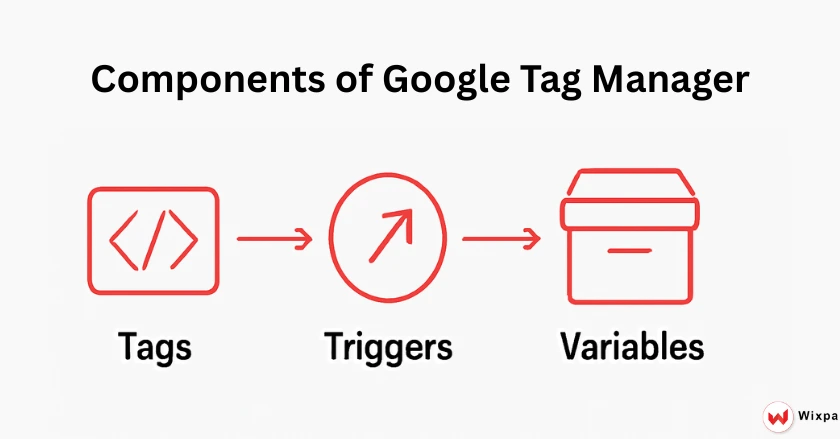
Google Tag Manager (GTM) is changing how marketers track websites and apps. Now, you don’t need to write any code. This tool helps businesses quickly and easily manage tracking tags. It offers precision and speed. Marketers, webmasters, and business owners can benefit from understanding GTM. It improves digital marketing and simplifies data collection. This makes it a key tool in today’s fast-moving digital world.
Short Intro
Google Tag Manager (GTM) is a free tool. It makes it easy to add tracking codes, marketing tags, and analytics snippets. GTM lets you manage all your tracking needs in one place. You can use tags, triggers, and variables for this. You won’t need help from developers. It simplifies complex tasks such as conversion tracking, remarketing, and site analytics. This makes it a must-have tool for marketing teams and newcomers to web tracking.
Why Is Google Tag Manager Important?
Digital marketing relies on accurate data collection for better decision-making. Handling multiple tracking codes for analytics, ads, and remarketing can be tough. It often leads to errors. GTM makes this process easier by putting all tracking scripts in one spot. This lets marketers deploy, modify, and test tags quickly as needed.
GTM keeps you agile, whether you run a small business or manage big campaigns. It removes the need for developers in daily tracking tasks. GTM offers tools to manage cookie consent and user permissions. This helps as data privacy rules change.
Key Features of Google Tag Manager
Google Tag Manager has a strong set of features. It works well for beginners who want simplicity. It also serves advanced users who need customization. These features make it one of the most adaptable tools in digital marketing.
Fast Deployment Capabilities
Gone are the days of waiting weeks for a developer to add a new tracking code to your website. With GTM, you can set up marketing tags and analytics scripts in minutes. The user interface is easy to use. Quick deployment is crucial for product launches, seasonal campaigns, and testing new ads. Every moment of data collection matters.
Centralized Control of Tags
Managing tracking systems like Google Analytics, Facebook Pixel, and Google Ads used to need scripts on many pages. GTM makes this easy. It creates one “container” for all your tags. You can store and manage everything there. This reduces complexity. It lowers errors and makes debugging easier. Updates are simpler when changes happen.
Robust Testing Options
GTM’s testing features ensure your tags work exactly as intended before going live. The built-in preview mode lets you see when tags will fire. This helps you find errors or misconfigurations before they affect your live website. Multi-environment testing lets you build different container versions for staging and production. This ensures a smooth transition when you publish updates.
Advanced Tracking Capabilities
GTM lets you track complex user interactions. These can be hard to measure with standard analytics tools. GTM lets you track scroll depth, video engagement, form submissions, and button clicks. This means you can set up advanced tracking easily, without custom coding. This helps you understand user behavior better. You can then improve your campaigns.
How Does GTM Differ from Google Analytics?
Many people think Google Tag Manager and Google Analytics are the same. In reality, they serve distinct roles in your marketing stack.
Differences Between GTM and Google Analytics
Google Analytics collects and reports data. It shows how users engage with your website or app. It processes and displays data, such as page views, bounce rates, and user demographics.
Google Tag Manager, on the other hand, is a tag deployment tool. It sends data to tools like Google Analytics, Google Ads, and other platforms. GTM is like a vehicle that gathers and moves data. Analytics is the place where this data gets analyzed and shown.
How GTM Complements Google Analytics
When combined, GTM and Google Analytics become a powerful duo. GTM lets you set up advanced tracking easily. You can track form submissions, video engagement, and custom events. Best of all, you don’t need to write any code. This data is then sent to Google Analytics for detailed reporting and analysis. It shows how users engage and how your marketing works on your digital platforms.
How GTM Complements Google Analytics
To get the best from Google Tag Manager, you need to know its three main parts: tags, triggers, and variables. These elements work together to collect, process, and deliver data effectively.

Tags
Tags are code snippets. They share information with tools like Google Analytics, Google Ads, and Facebook Ads. Examples of common tags include
- Google Analytics tracking for page views.
- Google Ads conversion tracking for purchases.
- Facebook Pixel for remarketing campaigns
- Custom HTML tags for specialized tracking needs.
Triggers
Triggers define when and where tags should fire. You can set a trigger to fire a tag when a user clicks a button, submits a form, or scrolls to a specific point on a page. Popular trigger types include
- Page view triggers: Fire when a page loads.
- Click triggers: Track interactions with buttons or links.
- Form submission triggers: Activate when a user submits a form.
Variables
Variables store dynamic information that tags and triggers a reference. Built-in variables include page URLs, click text, and button IDs. You can create custom variables to track specific data. This includes details like product categories or user roles.
Practical Applications of Google Tag Manager
The versatility of GTM makes it suitable for a wide range of marketing objectives. Here are some practical examples of how it can be used:
Streamlining Campaign Tracking
With GTM, you can create tag templates for regular campaigns. Track Google Ads conversions. Set up Facebook remarketing tags. Measure app interactions. This consistency ensures accurate data collection across all your marketing efforts.
Optimizing User Engagement
Triggers allow you to measure how users interact with your website.
You can set up different triggers:
- Scroll triggers to see if visitors read long content.
- Timer triggers to check how long they stay on a page.
- Click triggers to find out which buttons or links are popular.
Advanced Data Collection
Variables enable you to gather more detailed information about user behavior. You can track which product categories users visit most. You can also create lookup tables. These help categorize user interactions by applying specific criteria.
Getting Started with GTM
To set up Google Tag Manager, follow these easy steps for proper implementation:
- Create an Account: Visit the GTM website, sign in with your Google account, and create a new account. Select whether you’re tracking a website or a mobile app. Then set up your account details.
- Install the Container Code :Copy the GTM container code. Then, paste it into the header and footer of your website. This code connects your site to GTM.
- Publish Your Tags: Use the preview mode to test your tags and triggers. Once everything works as expected, publish your changes to make them live on your website.
Why should you use GTM?
Google Tag Manager has many benefits that make it essential for today’s marketers:
- Faster Implementation: Deploy tags in minutes without relying on developers.
- Improved Accuracy: Centralized tag management reduces errors and streamlines updates.
- Advanced Tracking: Measure detailed user interactions, such as form submissions and scroll depth.
- Enhanced Security: Built-in features protect your site from harmful code. They also ensure compliance with data privacy rules.
Conclusion
Google Tag Manager is a key tool for optimizing digital marketing. It makes tracking easier, improves data collection, and helps marketers manage their campaigns. They can do this without needing technical skills. GTM is great for everyone. It offers flexibility and scalability, helping you reach your marketing goals.
Ready to get started? Check out Google’s Analytics Academy. Explore GTM’s Community Template Gallery. See how this platform can change your tracking and analytics.
Frequently Asked Questions (FAQ)
Google Tag Manager lets you add and manage tracking codes easily. You can do this without touching your site’s source code. It streamlines marketing and analytics tag deployment.
Google Tag Manager does not track data itself. It only delivers tracking scripts from tools like Google Analytics or Facebook Pixel.
A Google Tag Manager tracker is any tag or script used for tracking. This includes event or conversion tracking codes deployed through Google Tag Manager.
Google Tag Manager helps you manage and deploy analytics, advertising, and remarketing tags. It does this quickly and efficiently, all without needing to code.





